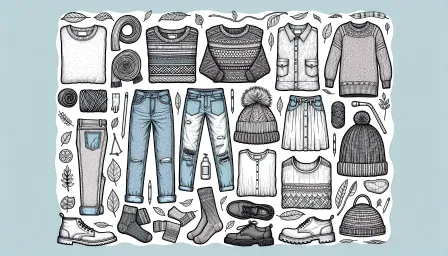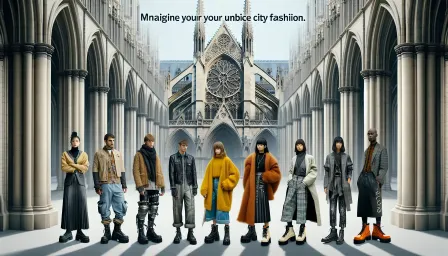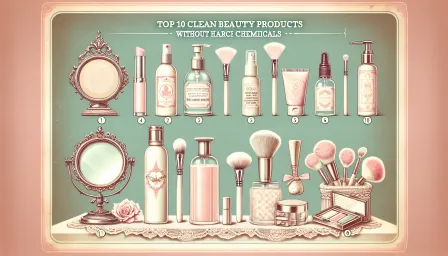Fashion Industry Future: Emerging Trends and Innovations You Need to Know

Explore the future of the fashion industry with emerging trends and innovations. Stay updated on key developments that are set to shape the fashion world.
The fashion industry is constantly evolving, driven by technological advancements, shifting consumer preferences, and global economic changes. As we look towards the future, several emerging trends and innovations are poised to shape the fashion landscape. In this article, we delve into the key developments you need to know to stay ahead in the dynamic world of fashion.
Technological Innovations Transforming Fashion
1. Digital Fashion and Virtual Try-Ons
One of the most groundbreaking trends in the fashion industry future is the rise of digital fashion. Virtual garments, which exist only in the digital realm, are being embraced by both consumers and designers. Platforms like DressX and The Fabricant are leading the way, offering digital-only collections that can be "worn" in photos and on social media avatars.
Additionally, virtual try-on technologies, powered by augmented reality (AR) and artificial intelligence (AI), are revolutionizing the shopping experience. Consumers can now see how clothes will fit and look on their bodies without physically trying them on, thanks to virtual mirrors and mobile apps developed by companies like Zeekit and Snap Inc.
2. Sustainable Fashion
Sustainability continues to be a dominant theme in the fashion industry future. Brands are increasingly adopting sustainable practices, from using eco-friendly materials to implementing circular production models. Companies like Patagonia and Stella McCartney are at the forefront, setting benchmarks in environmentally conscious fashion.
Moreover, innovations such as biodegradable fabrics, recycling technologies, and eco-friendly dyeing processes are significantly reducing the industry's carbon footprint. The integration of blockchain technology is also enhancing transparency, enabling consumers to trace the lifecycle of their garments.
3. 3D Printing and Customization
3D printing technology is ushering in a new era of customization in fashion. This innovation allows for the creation of bespoke garments tailored to individual measurements, reducing the waste associated with mass production. Designers like Iris van Herpen are using 3D printing to push the boundaries of creative expression, making intricate and avant-garde designs possible.
Additionally, the accessibility of 3D printing is democratizing fashion, enabling independent designers and small businesses to produce unique items without the need for large-scale manufacturing facilities.
Consumer Trends Shaping the Future
1. Rise of Direct-to-Consumer (DTC) Brands
The direct-to-consumer (DTC) model has gained significant traction in the fashion industry. Bypassing traditional retail channels, DTC brands like Everlane and Glossier sell directly to consumers through their online platforms. This approach allows for greater control over branding, pricing, and customer experience.
As consumers increasingly seek personalized shopping experiences and value transparency, the DTC model is set to continue its growth. The model also facilitates the collection of customer data, enabling brands to tailor their offerings to meet consumer demands more effectively.
2. Rental and Resale Markets
The fashion rental and resale markets are booming, driven by a shift towards more sustainable consumption patterns. Platforms like Rent the Runway and The RealReal offer consumers access to high-quality fashion items without the commitment of ownership.
Rental services cater to fashion enthusiasts seeking variety without the environmental impact, while resale platforms provide a second life for pre-owned garments. These circular economy models are reducing waste and promoting more responsible fashion consumption.
3. Inclusivity and Diversity
Inclusivity and diversity are becoming central tenets of the fashion industry. Brands are recognizing the importance of representing a wide range of body types, ethnicities, and gender identities in their campaigns and product offerings. Companies like Fenty by Rihanna have set new standards by embracing inclusivity in both their marketing and product lines.
This trend towards inclusivity is not only a moral imperative but also a smart business move, as it resonates with a broader audience and fosters brand loyalty.
The Role of Data and Analytics
1. Predictive Analytics and AI
The use of data and analytics is transforming the fashion industry, enabling brands to make more informed decisions. Predictive analytics and AI are being used to forecast trends, optimize inventory management, and personalize marketing strategies.
For example, fashion retailers like ASOS and Zara are leveraging AI to analyze customer behavior and preferences, helping them to curate product selections that align with current and future trends.
2. Enhanced Supply Chain Management
Advanced data analytics are also revolutionizing supply chain management. Real-time data tracking and insights allow brands to streamline their operations, reduce lead times, and mitigate risks. Technologies like RFID tagging and IoT devices provide greater visibility into the supply chain, ensuring more efficient and transparent processes.
As the fashion industry continues to embrace digital transformation, the integration of data and analytics will play an increasingly critical role in driving innovation and efficiency.
Conclusion
The future of the fashion industry is set to be defined by technological innovation, sustainable practices, and a deepening focus on inclusivity and consumer-centric approaches. As digital fashion, virtual try-ons, and sustainable materials continue to gain traction, brands that embrace these trends will be well-positioned to thrive in the evolving market.
Additionally, the rise of direct-to-consumer brands, rental and resale markets, and the strategic use of data and analytics will shape the industry's landscape. By staying informed and adapting to these emerging trends, fashion businesses can navigate the future successfully, meeting the needs and expectations of increasingly conscientious consumers.



























